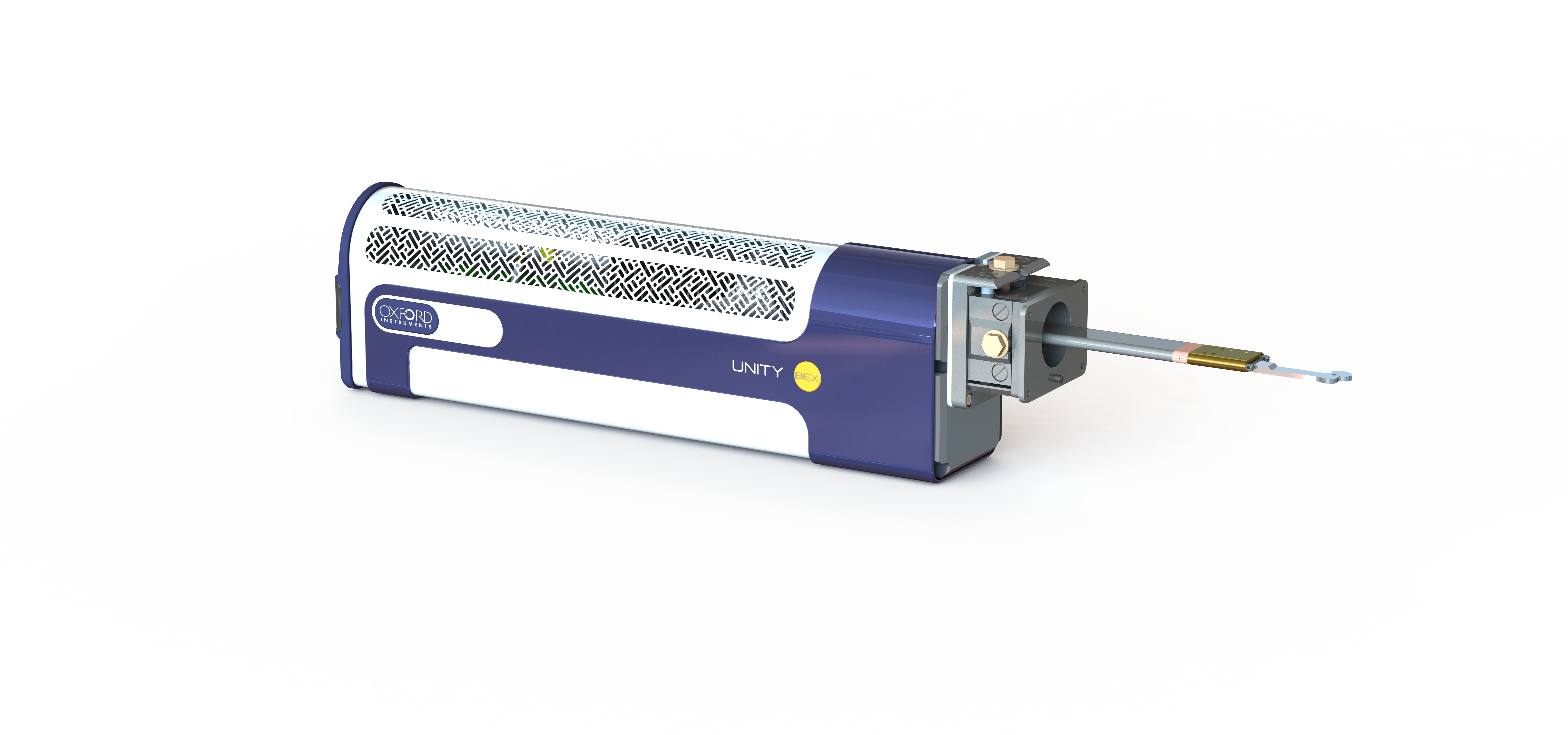21 June 2023
Announcing the launch of Unity
the World’s first commercial detector for instant chemical imaging
Oxford Instruments today launches the world's first imaging detector to combine Backscattered Electron and X-ray imaging in a single technique – BEX. Unity enables researchers, scientists, and students to achieve instant visual and compositional sample analysis simultaneously in the Scanning Electron Microscope (SEM).
Traditionally, determining the elemental makeup and composition of materials in the SEM has been a repetitive, laborious process. This involves acquiring black-and-white electron images based on the secondary electron and backscattered electron signals. X-ray signals are then used to determine chemical composition. This is
time-consuming, especially because users must replicate this process repeatedly until anomalies or areas of interest are located. However, with Oxford Instruments’ Unity detector and innovative BEX technique, BSE and X-ray signals are captured simultaneously, allowing users to instantly observe the microstructure and chemistry of samples in full-colour, high-resolution images.
The game-changing Unity detector combines the topographic, crystallographic, atomic number and elemental information in an immediate high-resolution visual output. Users can effortlessly navigate around the sample, making sophisticated sample analysis simpler and faster than ever before.
The Oxford Instruments team has spent six years developing the Unity detector, revolutionising the workflow for sample analysis. The unprecedented speed of the Unity detector provides accurate, high-resolution chemical mapping of whole samples in just minutes, allowing users to quickly identify features and regions that
warrant further investigation. By having this valuable cartographic data at their disposal before detailed examination, users can swiftly transition from initial instincts to scientific insights, opening inspiring new research directions.
Along with bringing significant advances to the way users conduct sample analysis, the Unity detector enables faster sample throughput - in tests, the Unity detector has boosted microscope productivity by up to 100x.
The Unity detector is supported by Oxford Instruments’ market-leading AZtec software, with TruQ for accurate element identification and composition determination, including Pile Up Correction, TruMap for live deconvolution, AutoID for live detection of elements and AutoLayer for live optimisation of image colours.
Dr Haithem Mansour, product manager at Oxford Instruments, said: “Our Unity detector and BEX technique are truly ground-breaking. We’re not only making complex sample analysis quicker and easier, but we’re also helping ensure the process is more robust and accurate, and giving users more time to focus on specific areas of their sample that demand their attention. Unparalleled in the market today, the powerful combination of hardware and software within the Unity detector brings new levels of certainty, reliability, and pace to the scientific community, accelerating the journey to scientific discovery.”
Discover more...


